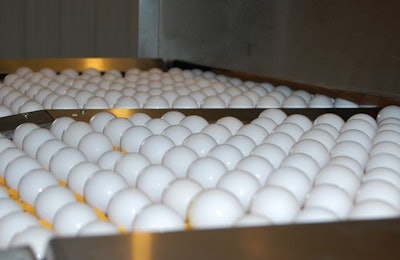
The YouTube series, posted in July 2021, goes into detail about the USDA’s preoperational inspection standards throughout the process steps of a shell egg plant and why it’s important.
The Purdue Extension series is comprised of 12 videos including an introduction and a detailed explanation of inspection at the farm belt, accumulator, washer, sanitizer, dryer, quality detection system, egg removal system, transfer system, carriage system and both upper and lower portions of the packer.
“Research has shown that ineffective cleaning and sanitation practices or programs can lead to reduced quality duration or potential product contamination. Residual microorganisms can lead to egg spoilage or foodborne illness,” stated Purdue. “Food processing and facility sanitation is an integral part of good manufacturing practices. Effective sanitation aids in ensuring the wholesomeness, safety and quality of shell eggs. The negative impacts on food safety and egg quality are a result of microbial growth.”
One of the series’ common themes discusses satisfactory and unsatisfactory findings during preoperational inspection in critical and noncritical areas at different steps of the process.
Critical areas include equipment that have potential surface contact with eggs, areas where eggs come in contact with wash water or areas where eggs are blown with air. Noncritical areas are places where it is not likely to affect product quality. Findings may vary between the two options depending on if the inspection is taking place in a critical or noncritical area in the plant.
“The term ‘reasonably clean’ is applied during the egg processing shift to indicate that equipment and processing areas are maintained with minimum egg meat accumulation, although a reasonable amount of buildup is expected while processing a raw agriculture commodity,” stated Purdue.
Organoleptic senses such as sight, smell, and touch are often used while performing an inspection, however, microbial growth cannot always be seen smelt or felt. Purdue continued to explain that employees and management are key to maintaining and exceeding the expectations found in the AMS voluntary grading program requirements.

















